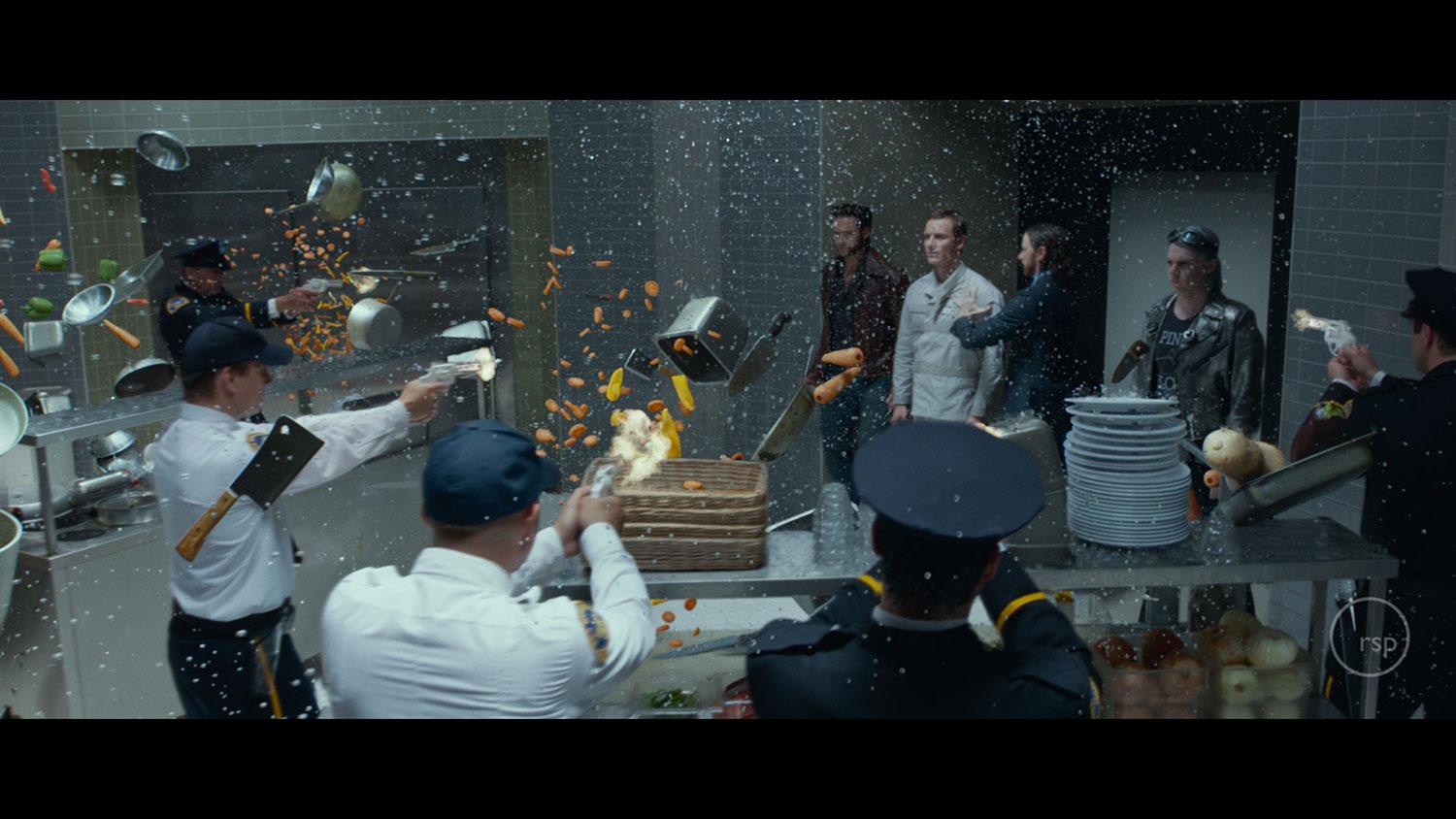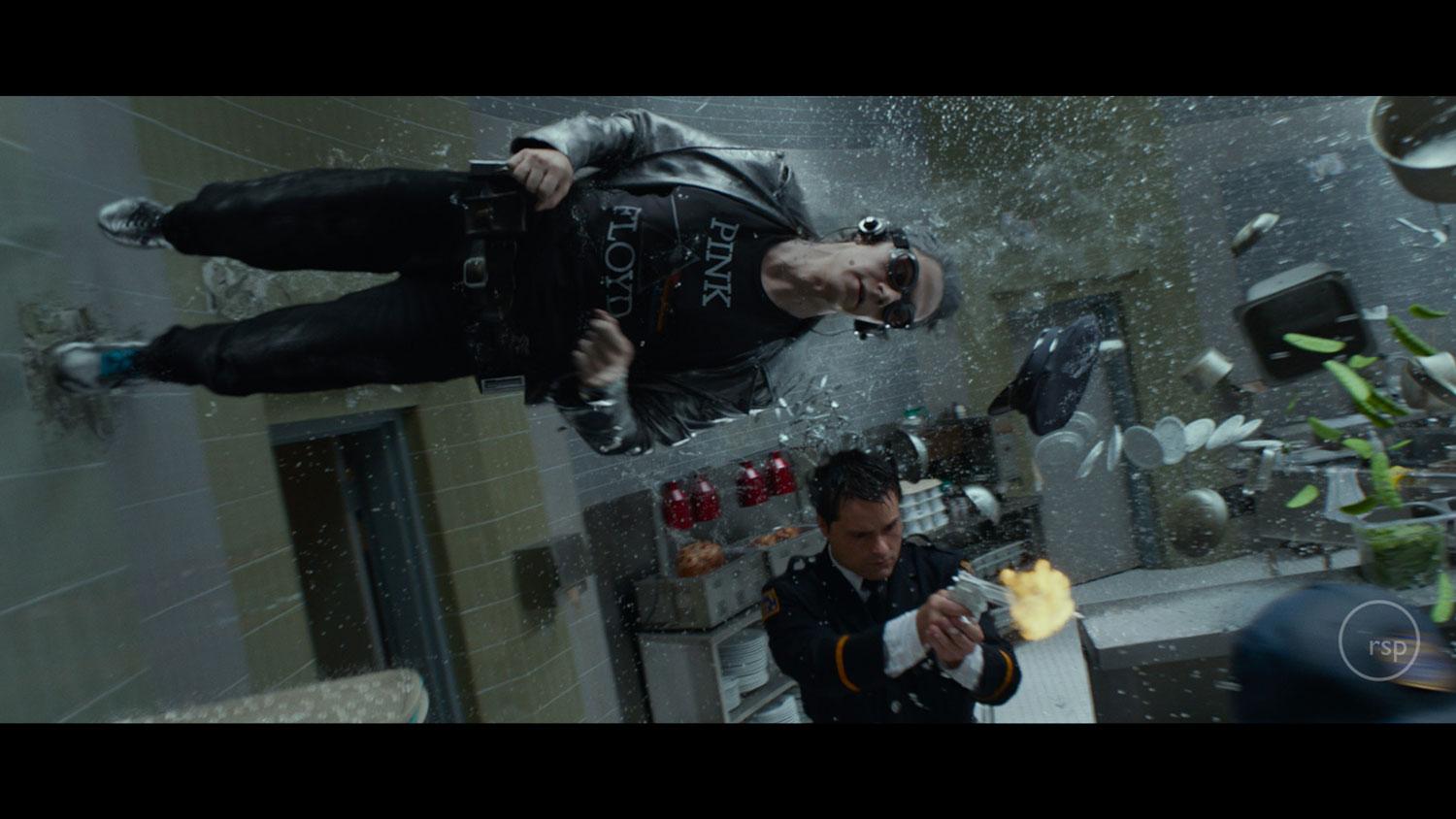Five films are nominated for an Academy Award in the “Visual Effects” category this year, and they each offer a nice look at the amazing tricks filmmakers and their effects teams can pull off on the big screen. In recognition of these five films and one of our favorite Oscar categories, we’re putting the spotlight on one “Visual Effects” nominee each day leading up to Sunday’s broadcast and taking a closer look at what made them stand out.
Previously, we looked at the face-mapping effects in Captain America: The Winter Soldier, the mobile motion-capture technology of Dawn of the Planet of the Apes, the digitally created duo that were the breakout stars of Marvel’s Guardians of the Galaxy, and the black hole that got the attention of audiences and scientists alike in Interstellar. In our final feature, we look at the time-stopping techniques that gave Quicksilver super-speed in X-Men: Days of Future Past.
There was a lot to like about last year’s X-Men: Days of Future Past, but it was one scene in particular that everyone seemed to be talking about after director Bryan Singer’s film hit theaters: Quicksilver’s time-stopping takedown of a kitchen full of guards.
While staging a prison break from the highest-security holding cell in the country, mutants Wolverine (Hugh Jackman) and Charles Xavier (James McAvoy) get a little assistance from fleet-footed mutant Quicksilver (Evan Peters), who incapacitates a group of security guards – often using their own feet, fists, and surroundings against them. He does all of this while listening to Jim Croce’s Time in a Bottle, which manages to make an already fantastic scene just a little bit better.
It’s a sequence that manages to be both funny and technically impressive as Peters’ character sprints around the room, circumnavigating it so quickly he’s able to run on the walls. As the contents of the room float along at a snail’s pace, he casually redirects bullets in mid-air, disarms soldiers, and repositions people at will, causing their bodies to react in extreme slow-motion to the manipulation that (for them) is occurring at lightning-fast speed.
The sequence is a mix of live-action stunts, computer-generated objects, and impressive visual-effects.
While one might expect such a scene to be crafted almost entirely in the digital realm, the sequence is actually a mix of live-action stunts, computer-generated objects, and impressive visual-effects crafted by VFX studio Rising Sun Pictures to blend all of the elements together.
Described as “the most memorable and awesome sequence in the movie” by the film’s visual-effects supervisor, Richard Stammers, the Quicksilver scene posed some unique problems to the VFX team charged with bringing it to the screen. First and foremost was the question of how slow the slow-motion cameras would need to roll in order to pull off the scene.
In order to capture various elements of the room caught in “Quicksilver time,” Stammers and the VFX team decided to shoot portions of the scene at 3600 frames per second using 3D Phantom photography – a speed that would allow time to appear just shy of frozen, but also retain the necessary 2K resolution. Rain falling from the sprinkler, up-ended pots and newspapers, and actors standing as still as possible (or reacting as dictated by the scene) were all filmed in ultra slow-motion in order to provide one layer of activity occurring in the sequence.
During the filming of the scene (back in August 2013), Bryan Singer posted a photo showing the massive amount of light required to capture the details of everything happening on camera.
“I don’t know how safe that is, keeping your eyes open for more than 20 seconds in that light,” said Peters of the sequence in a 2013 interview with io9. “Yeah, it does hurt. It’s really difficult to keep your eyes open… It’s super, super, super, super slo-mo. You can see raindrops frozen in the air. Stuff like that. It’s amazing how that camera works.”
Once the slow-motion portion of the sequence had been created, it was time to film the same scene as it unfolded from Quicksilver’s sped-up perspective.
To create the illusion of Quicksilver moving faster than everything around him, Peters was filmed on a treadmill and using a variety of wire-work stunts (in order to simulate running on the walls) at a more manageable 120 frames-per-second. Many of the close-up scenes featuring Peters’ face were filmed using a green-screen background, while other segments were filmed using a stunt double on a rigged-up version of the set that allowed his character to run up one wall and hop from the wall to floor without missing a step. The 120fps photography allowed the VFX team to manipulate the speed of certain portions of the sequence, creating the effect of Quicksilver casually accelerating and slowing down as he makes guards punch themselves or gives them a high-speed wedgie.
“I don’t know how safe that is, keeping your eyes open for more than 20 seconds in that light.”
“We had a high-speed camera – a bunch of cameras – that were on rigs that were circling with him,” recalled Days of Future Past writer Simon Kinberg while promoting the film last year. “So most of that [scene] was shot in camera. … If you go on the Internet and search for super-high-speed photography, it’s all of those effects like where he touches the guy’s cheek and it bends. It’s just because the camera has been so sped up. It’s not a visual effect. The only visual effect in that movie is some of the stuff in the air. I mean, some of the stuff that’s flying through the air isn’t real, because we couldn’t control rice particles. But some of the things in the air are real. … Bryan had a very clear focus on what he wanted in that sequence.”
Once the 3,600fps scene was filmed and the various 120fps scenes were also shot, the studio combined them into a single sequence. Computer-generated effects were added where necessary, and adjustments were made to elements like Peters’ pace during the “Quicksilver time” shots, which was deemed too incongruous with the number of steps someone moving at that speed should be taking to cover a particular distance.
What audiences see on the screen, it turns out, is an amalgam of multiple sequences filmed at different speeds and on different sets, blended together through the magic of visual-effects technology.
Even with all of that footage, however, there where some cases when the VFX team had to improvise – particularly when even 3,600fps wasn’t capable of capturing a necessary detail.
“Many of us have seen slow-mo fluids on YouTube in one form or another, but in this case we’re slowing down some of the shots to rates that are currently not seen with even the fastest production cameras available,” explained VFX supervisor Tim Crosbie in an interview with FX Guide. “As an example, we were able to source a lot of still footage of bullets leaving gun barrels, but for moving footage even at 3,000 fps the bullet’s gone too quickly. So we had to extrapolate and produce something that looked believable as well as cool.”
And one thing most critics and audiences alike seem to agree on is that the final product is certainly that: cool.
Whether the Academy Awards committee feels the same way, though, remains to be seen.









